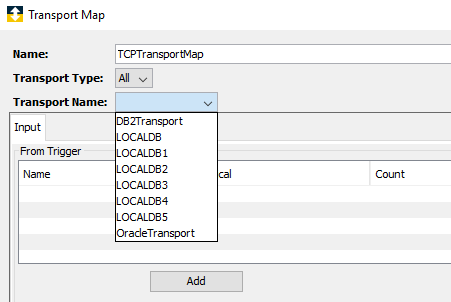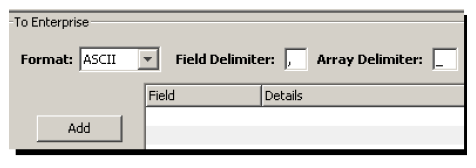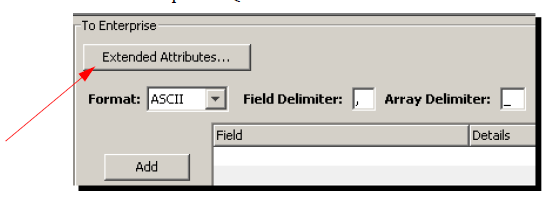When you create a transport map and associate the transport map with a JMS-based message system, WebSphere MQ, MSMQ, or TCP transport, you must specify the format of the message (either ASCII, XML, freeform text, map message or custom). Once the message format is specified, you can create map variables that will comprise the message.
Assumptions
The following is assumed:
- Transports have been created and are available on the node. If you want to learn more about transports and how the node uses them to deliver data, see Transports.
Procedures
The following will describe how to define a JMS, WebSphere MQ, MSMQ, and TCP transport map and define the map variables and payload.
- From the Workbench left pane, expand the node that
you want to add the transport map to.
- Expand Enterprise, right-click the
Transport Maps icon to display its
pop-up menu, and then click New.
The Transport Map window appears. - Name the transport map as appropriate, and then set
the Version Mismatch option to either
Pass or Fail.
- Next to Transport, click the down
arrow. A list of the transports defined on the node
appears.

- Select the transport that will be used to send the
payload. For this example, a TCP transport was
selected.
The following shows the To Enterprise section of the Transport Map window when a TCP is selected.
If you specify a WebSphere MQ or JMS transport, there is an Extended Attributes button that gives you the ability to override some of the default messaging extended attributes.
Using the Extended Attributes button, the WebSphere MQ or JMS transport can provide a payload that has protocol specific context information that can be added to the message header including messageID and correlationID.
- For more information on WebSphere MQ extended
attributes , see Using
WebSphere MQ extended attributes.
- For more information on JMS extended attributes , see Defining JMS extended attributes.
- For more information on MSMQ extended attributes, see Defining MSMQ extended attributes
Now that you have specified the transport, you can add the
payload.The first step when adding a payload is to identify
the format of the message.
- Under the To Enterprise section,
click the Format down-arrow to display
a list.
Options available from the Format list enable the transformation of data to:- An ASCII message (see Defining an ASCII message payload)
- Freeform text (see Creating a payload of freeform text)
- XML format (see Defining the XML payload)
- Custom format (see Adding a custom payload)
- XSD format (see Creating a transport map with an XSD payload)
In addition, there is a Map option available only for JMS-based transports (see Adding a map message as the payload).
What's Inside